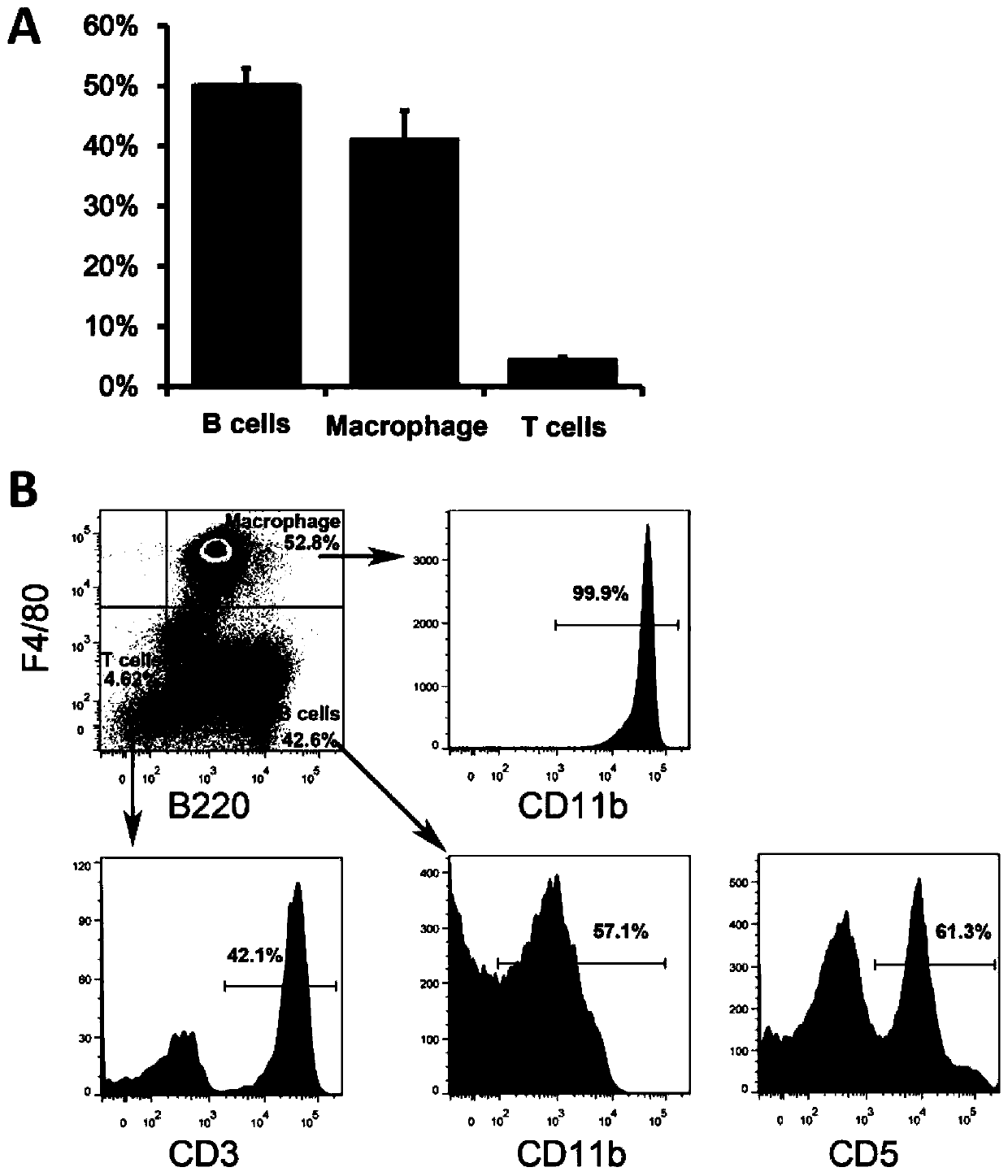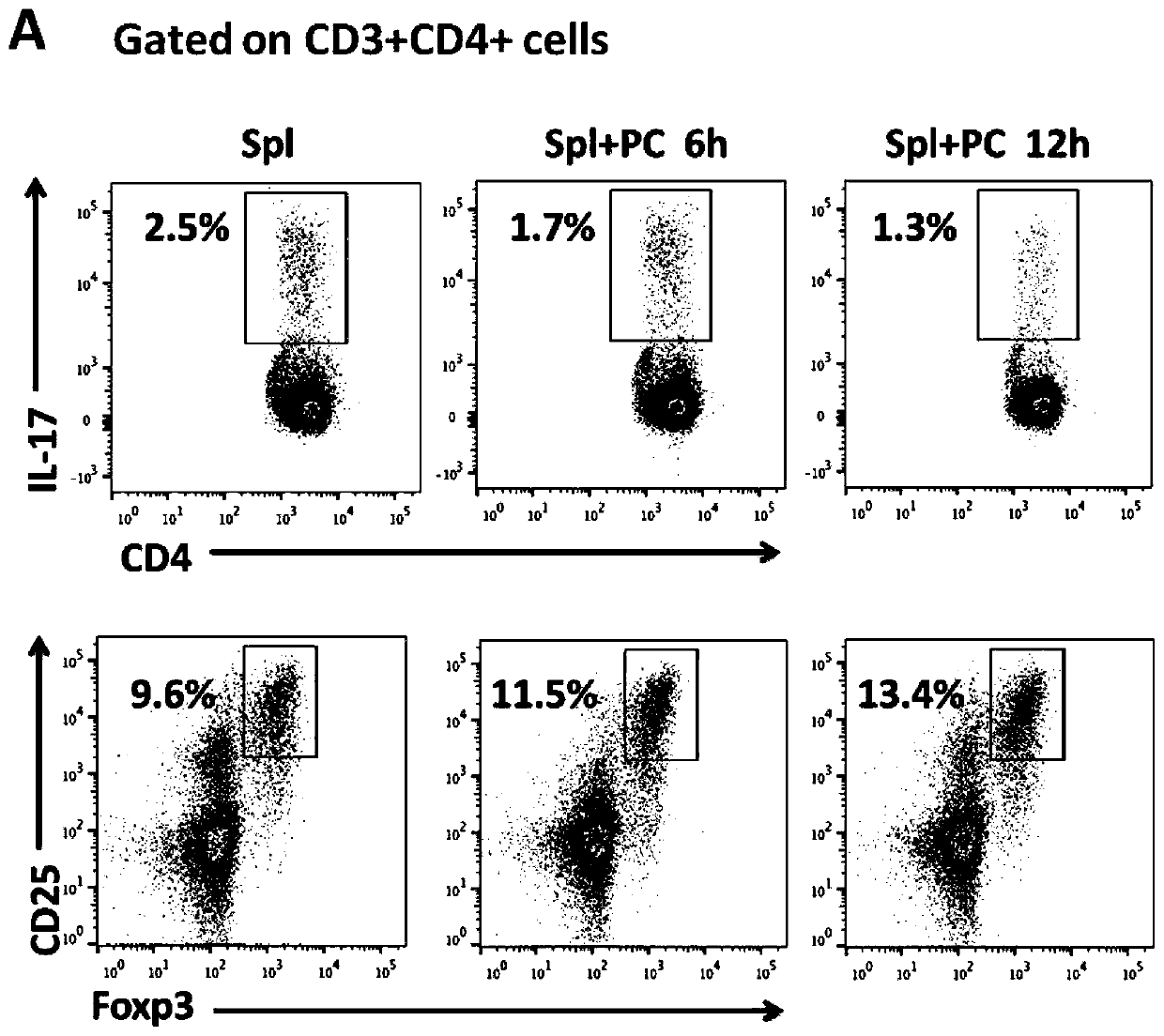Application of peritoneal cells to induction of differentiation of T cells into regulatory T cells
A technology of cell induction and cell differentiation, applied in the field of medicine, can solve the problem of no T cell report
- Summary
- Abstract
- Description
- Claims
- Application Information
AI Technical Summary
Problems solved by technology
Method used
Image
Examples
Embodiment 1
[0042] Example 1 Study on the composition and characteristics of peritoneal cells
[0043] 1. Acquisition of peritoneal cells
[0044] 1. Mice aged 6-7 weeks were killed by cervical dislocation, soaked in 75% alcohol for 1-2 minutes, moved into ultra-clean bench, fixed on dissecting board in supine position, and disinfected abdominal skin with alcohol.
[0045] 2. Use a 10ml syringe fitted with a 25g needle to draw 8mL of pre-cooled RPMI-1640 medium into the abdominal cavity, rub the abdomen lightly, then cut a small opening in the neck with ophthalmic scissors, cut the abdominal skin along the midline of the abdomen through the small opening, and expose the abdominal muscles.
[0046] 3. Under sterile conditions, draw the cell suspension with a 10ml syringe and transfer it into a centrifuge tube.
[0047] 4. After counting, centrifuge at 1200rpm for 5min, resuspend the cells in RPMI-1640 culture medium and dilute to the target concentration.
[0048] 2. The composition and...
Embodiment 2
[0052] Example 2 The role of peritoneal cells in inducing the differentiation of CD4+ T cells into regulatory T cells
[0053] Use 1ml 2×10 6 / ml according to the peritoneal cells obtained in Example 1 and 1ml 2×10 6 Spleen T cells / ml were co-cultured in an incubator with 5% carbon dioxide at 37 degrees Celsius for 6 or 12 hours, CD3+CD4+CD25+Foxp3+ regulatory T cells and CD3+CD4+IL in CD4+ T cells were detected by flow cytometry Percentage of -17+Th17 cells. The experiment was repeated 3 times. See the experimental results figure 2 .
[0054] figure 2 It was shown that CD3+CD4+CD25+Foxp3+regulatory T cells were significantly increased and CD3+CD4+IL-17+Th17 cells were significantly decreased when peritoneal cells were co-cultured with spleen T cells for 6 or 12 hours. The above experimental results show that the co-culture of peritoneal cells and T cells can effectively promote the differentiation of CD4+ T cells into regulatory T cells, thereby promoting the producti...
PUM
 Login to View More
Login to View More Abstract
Description
Claims
Application Information
 Login to View More
Login to View More - R&D
- Intellectual Property
- Life Sciences
- Materials
- Tech Scout
- Unparalleled Data Quality
- Higher Quality Content
- 60% Fewer Hallucinations
Browse by: Latest US Patents, China's latest patents, Technical Efficacy Thesaurus, Application Domain, Technology Topic, Popular Technical Reports.
© 2025 PatSnap. All rights reserved.Legal|Privacy policy|Modern Slavery Act Transparency Statement|Sitemap|About US| Contact US: help@patsnap.com


